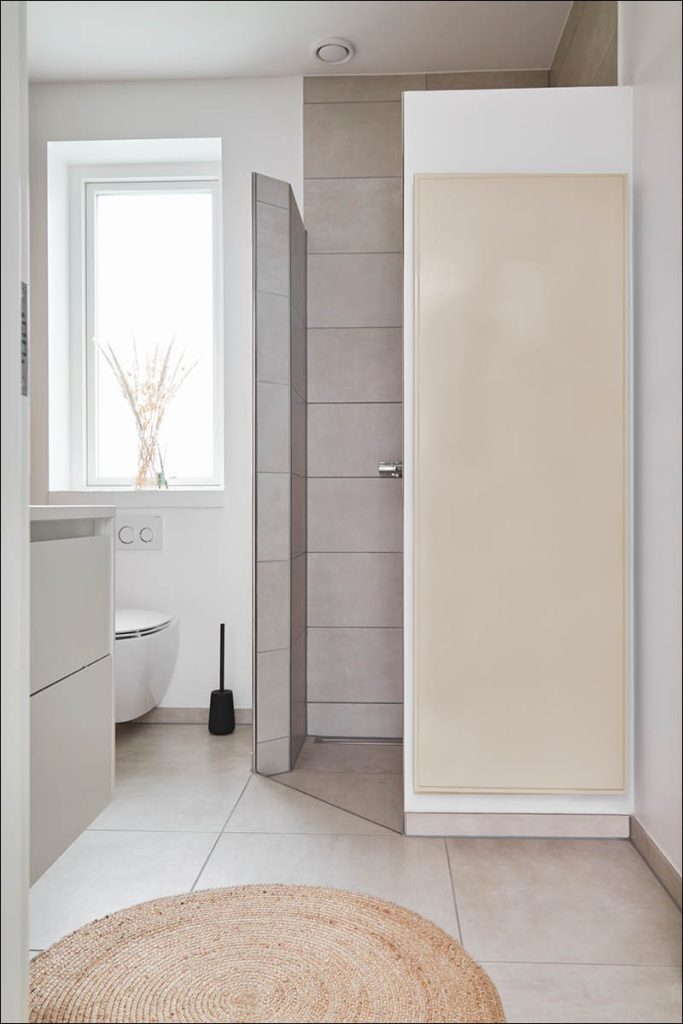
A radiator in the bathroom helps to heat the room, can give you dry towels and can be a nice design element that you want to highlight. However, there are a few things you need to think about if you are replacing an existing radiator or building a new home and are considering installing a radiator in the bathroom.
A modern bathroom or wet room is often divided into zones: a wet zone (zone 1and 2) and a splash zone (zone 3). The wet zone includes the part of the room that is regularly exposed to direct water, and here the strictest requirements are made for construction and materials. The wet zone always includes the shower area or above bath (zone 1), 60 cm from zone 1 and 60 cm from taps and washbasin (zone 2). Small wet rooms or bathrooms are often considered a single wet zone, as it is difficult to avoid splashing water on the walls in a small bathroom.
The splash zone includes all wall areas (2,4 m) outside the wet zone. Here the requirements for materials and surfaces are not as strict as in the wet zone, but somewhat stricter than in other rooms in the home, as there will still be a large impact of water and moisture.
A radiator should never be placed in a wet zone, as it must not be exposed to direct contact with water.
In general, there are no requirements for what type of radiator you can install in the bathroom. It can either be water-based and therefore connected to your heating system, or you can choose an electric radiator. However, it is important that you have a professional install your electric radiator, so you comply with current regulations for electrical installations.
However, you should be aware that most radiators are made of steel, and when you install a radiator in a wet room - i.e. in a bathroom or in a room where it is often damp and wet such as a changing room, shower room, etc. - the radiator will, after a while, start to rust. It is not because the radiator is made of "bad steel", but it is simply a natural process that starts when the steel is repeatedly exposed to moisture. Rust is a chemical compound that occurs when steel, iron or ferrous materials encounter water and oxygen. The rust can cause the paint on the radiator to flake off, and over time the radiator will leak as water and oxygen penetrate the steel.
If you are going to install a radiator in bathrooms or other rooms where the radiator often encounters moisture, water and condensation, we recommend that you order your radiators with E-coating or electrocoating as it is also called. E-coating is a process where the radiator is immersed in a paint bath, and where electricity is used to apply the paint. After E-coating, the radiator is painted with its final color.

All our radiators can be treated with E-coating, so they can be used in any given wet environment. There is therefore no restriction on what type, design, shape, style or size you can use in your bathroom, if it is not installed in a wet zone and is E-coated.
Of course, you can also choose to go with a heated towel rail to dry your towels. Please be aware that many heated towel rails are intended for exactly that - drying towels - and therefore do not give off enough heat to also heat your bathroom. A heated towel rail is, on the other hand, a nice supplement to a bathroom with underfloor heating.
If you have questions about our radiators, heating in general or if you need advice and guidance on radiators and heating solutions, we are always ready to assist you.





